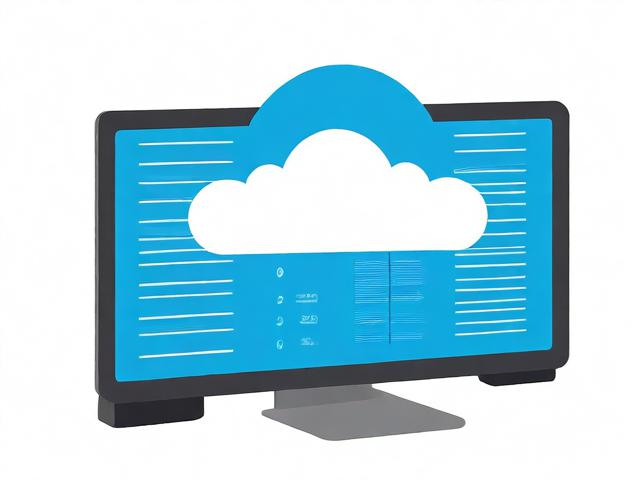c#怎么写api接口
- 行业动态
- 2025-02-04
- 2
在C#中编写API接口通常涉及以下几个关键步骤:
1、创建ASP.NET Core Web API项目
使用Visual Studio创建项目:打开Visual Studio,选择“创建新项目”,在项目模板中选择“ASP.NET Core Web API”,然后点击“下一步”,为项目命名并选择合适的保存位置,点击“创建”。
选择框架和目标:在弹出的窗口中,选择目标框架(如.NET 6.0或更高版本)和目标操作系统(通常选择“Windows”或“跨平台”),然后点击“下一步”。
配置项目选项:根据需要选择是否启用Docker支持等选项,然后点击“创建”。
2、定义模型类
模型类用于表示API接口的数据结构,如果要创建一个获取用户信息的API接口,可以定义一个User模型类:
public class User
{
public int Id { get; set; }
public string Name { get; set; }
public string Email { get; set; }
// 其他属性...
} 3、创建控制器
控制器是处理HTTP请求的核心部分,使用[ApiController]特性来标记控制器类,并在其中定义API接口的方法。

using Microsoft.AspNetCore.Mvc;
[ApiController]
[Route("api/[controller]")]
public class UsersController : ControllerBase
{
[HttpGet]
public IEnumerable<User> GetAllUsers()
{
// 模拟一些用户数据
return new List<User>
{
new User { Id = 1, Name = "张三", Email = "zhangsan@example.com" },
new User { Id = 2, Name = "李四", Email = "lisi@example.com" }
// 更多用户数据...
};
}
[HttpGet("{id}")]
public User GetUserById(int id)
{
// 模拟根据ID获取用户数据
return new List<User>
{
new User { Id = 1, Name = "张三", Email = "zhangsan@example.com" },
new User { Id = 2, Name = "李四", Email = "lisi@example.com" }
// 更多用户数据...
}.FirstOrDefault(u => u.Id == id);
}
[HttpPost]
public IActionResult CreateUser([FromBody] User user)
{
// 处理创建用户的逻辑
// 这里只是简单地返回创建的用户信息
return CreatedAtAction(nameof(GetUserById), new { id = user.Id }, user);
}
[HttpPut("{id}")]
public IActionResult UpdateUser(int id, [FromBody] User user)
{
// 处理更新用户的逻辑
// 这里只是简单地返回更新后的用户信息
user.Id = id;
return Ok(user);
}
[HttpDelete("{id}")]
public IActionResult DeleteUser(int id)
{
// 处理删除用户的逻辑
// 这里只是简单地返回一个空结果
return NoContent();
}
} 在上面的代码中,[HttpGet]、[HttpPost]、[HttpPut]和[HttpDelete]特性分别用于处理GET、POST、PUT和DELETE请求。[FromBody]特性用于从请求体中获取数据。
4、配置路由(可选)
如果需要自定义路由,可以在Startup.cs文件中的Configure方法中进行配置。
public void Configure(IApplicationBuilder app, IWebHostEnvironment env)
{
if (env.IsDevelopment())
{
app.UseDeveloperExceptionPage();
}
app.UseRouting();
app.UseEndpoints(endpoints =>
{
endpoints.MapControllers();
// 自定义路由示例
endpoints.MapGet("/custom/users", async context =>
{
var users = new List<User>
{
new User { Id = 1, Name = "张三", Email = "zhangsan@example.com" },
new User { Id = 2, Name = "李四", Email = "lisi@example.com" }
// 更多用户数据...
};
await context.Response.WriteAsJsonAsync(users);
});
});
} 5、运行和测试API接口
按下Ctrl+F5运行项目,Visual Studio将启动一个本地开发服务器,可以在浏览器中访问http://localhost:5000/api/users来测试获取所有用户的API接口,或者使用Postman等工具发送不同类型的HTTP请求来测试其他API接口。
以下是两个关于C#编写API接口的常见问题及解答:

问题1:如何在C#中实现API接口的身份验证?
解答:可以使用多种方式来实现身份验证,常见的有以下几种:
基本身份验证:通过在请求头中添加用户名和密码的Base64编码来实现简单的身份验证,在控制器的方法上可以使用[Authorize]特性来限制访问权限。
[ApiController]
[Route("api/[controller]")]
public class SecureController : ControllerBase
{
[HttpGet]
[Authorize]
public IActionResult SecureData()
{
return new JsonResult(new { message = "这是受保护的数据" });
}
} 然后在Startup.cs中配置基本身份验证中间件:
public void ConfigureServices(IServiceCollection services)
{
services.AddControllers();
services.AddAuthentication(options =>
{
options.DefaultScheme = "BasicAuthentication";
}).AddScheme<BasicAuthenticationOptions, BasicAuthenticationHandler>("BasicAuthentication", options =>
{
options.Realm = "Secure Area";
options.RequireExpirationTime = true;
});
} 令牌身份验证:使用JWT(JSON Web Token)等令牌来进行身份验证,首先需要在项目中安装相关的JWT库,如Microsoft.IdentityModel.Tokens和System.IdentityModel.Tokens.Jwt,然后生成和验证令牌,并在控制器中使用[Authorize]特性结合自定义的策略来进行授权。
// 生成令牌的方法示例(简化版)
public string GenerateToken(string userId)
{
var securityKey = new SymmetricSecurityKey(Encoding.UTF8.GetBytes("your-secret-key"));
var credentials = new SigningCredentials(securityKey, SecurityAlgorithms.HmacSha256);
var claims = new[]
{
new Claim(JwtRegisteredClaimNames.Sub, userId),
// 其他声明...
};
var token = new JwtSecurityToken(null, null, claims, DateTime.UtcNow, DateTime.UtcNow.AddMinutes(30), credentials);
return new JwtSecurityTokenHandler().WriteToken(token);
} 在控制器中使用令牌进行身份验证:

[ApiController]
[Route("api/[controller]")]
public class TokenSecureController : ControllerBase
{
[HttpGet]
[Authorize]
public IActionResult SecureDataWithToken()
{
return new JsonResult(new { message = "这是使用令牌保护的数据" });
}
} OAuth身份验证:适用于与外部身份提供商(如Google、Facebook等)集成的场景,这需要更多的配置和代码来实现,通常会使用第三方库来帮助处理OAuth流程。
问题2:如何在C#中处理API接口中的异常?
解答:可以使用全局异常处理中间件来捕获和处理API接口中的异常,避免暴露内部错误信息给客户端,在Startup.cs文件中配置全局异常处理:
public void Configure(IApplicationBuilder app, IWebHostEnvironment env)
{
if (env.IsDevelopment())
{
app.UseDeveloperExceptionPage();
}
else
{
app.UseExceptionHandler(new CustomExceptionHandler());
}
app.UseRouting();
app.UseEndpoints(endpoints =>
{
endpoints.MapControllers();
});
} 然后创建一个自定义的异常处理类CustomExceptionHandler:
public class CustomExceptionHandler : ExceptionHandlerMiddlewareConventionBase
{
private readonly ILogger _logger;
public CustomExceptionHandler(ILoggerFactory loggerFactory)
{
_logger = loggerFactory.CreateLogger<CustomExceptionHandler>();
}
public override async Task InvokeAsync(HttpContext context)
{
try
{
await context.Next();
}
catch (Exception ex)
{
_logger.LogError(ex, ex.Message);
var response = new JsonResult(new { error = "An unexpected error occurred." }) { StatusCode = (int)HttpStatusCode.InternalServerError };
await context.Response.WriteAsJsonAsync(response);
}
}
} 这样,当API接口中发生未处理的异常时,会返回一个通用的错误消息给客户端,而不是详细的异常堆栈信息,异常信息会被记录到日志中,方便开发人员进行调试。












